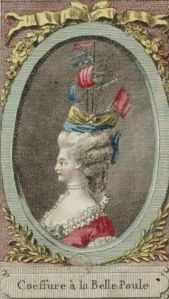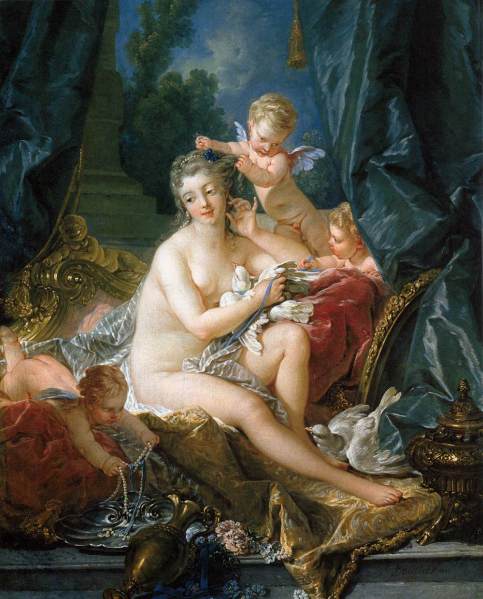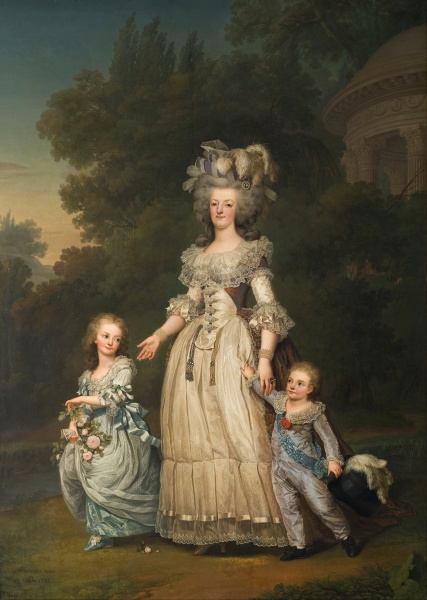 Natural pearl and diamond pendant, 18th century;
Natural pearl and diamond pendant, 18th century;
set with an oval diamond supporting a diamond bow motif
and a baroque drop-shaped natural pearl measuring approximately 16 × 18 × 26mm.
A natural pearl and diamond jewel of delicately wrought beauty once belonged to history’s most glamorous scapegoats for the abuses and injustices of autocracy, the victim of nationalism and misogyny, reviled by women and men, the hated l’autrichienne, the Austrian bitch, Maria-Antonia von Habsburg-Lothringin, known as Marie Antoinette, queen of France.
Political assassination is arguably justified, character assassination is not. Of all the offensive insults thrust at her, the most hurtful, far worse than all the salacious sexual slurs, the one that cut deepest, more humiliating than being deprived of shoes and false teeth in prison, more painful than beheading, was the Tribunal’s allegation of incest with her son.
“If I have not replied it is because Nature itself refuses to answer such a charge laid against a mother. I appeal to all mothers here present – is it true?”

Marie Antoinette on her way to the guillotine, drawn by David, 16 October 1793. Image: Wikipedia.
She was 37 years old. Usually, press reports about celebrity women degrade them by mentioning their age, but in this case the vulgar habit of prejudging by numbers is justified by the shock of
this woman’s premature ageing due to suffering
She, who was brought up to be a dynastic pawn, a bride and mother of kings, became the Eternal Feminine demonized. She was never expected to have control of her identity; her often derided play-acting at being a fashionably Romantic shepherdess in a pastoral idyll was her attempt at self-emancipation.
The modern perception of Marie Antoinette has shifted away from the inverted fairy story heroine, the romanticized narrative of an over-privileged but misunderstood star of the diamond-studded, blood-stained Versailles reality show, to the universal figure in women’s history of wronged mother and foreigner.
 Marie-Antoinette and her children by Élisabeth Vigée Le Brun, 1787
Marie-Antoinette and her children by Élisabeth Vigée Le Brun, 1787
While she was imprisoned, she was separated from her children. As she prepared for death, her chief anxiety was about their fate. An 18th century princess endured the kind of degradation and psychological torture that tyranny in the modern world still inflicts on female immigrants and their families.
And there’s the jewel itself, the progeny of animals and human skill, that natural pearl of iridescence beyond price, a man-made thing lovely enough to be the symbol of our atonement for our sins against nature and each other, sold for silly money, £25 million that should be spent on environmental conservation and humanitarian missions to reunite migrant families and release political prisoners.



 Adolf Ulrik Wertmüller, Marie Antoinette and her two eldest children walking in the park of Trianon (1785) oil on canvas, Nationalmuseum Sweden. Image source: Wikipedia.
Adolf Ulrik Wertmüller, Marie Antoinette and her two eldest children walking in the park of Trianon (1785) oil on canvas, Nationalmuseum Sweden. Image source: Wikipedia. Vigée-Lebrun, Self-portrait with her daughter Julie, c. 1789 oil on canvas Musée du Louvre, Paris. Image source: WGA.
Vigée-Lebrun, Self-portrait with her daughter Julie, c. 1789 oil on canvas Musée du Louvre, Paris. Image source: WGA.
 Guérin Georgiana, Duchess of Devonshire, with Lady Elizabeth Foster c. 1791
Guérin Georgiana, Duchess of Devonshire, with Lady Elizabeth Foster c. 1791

